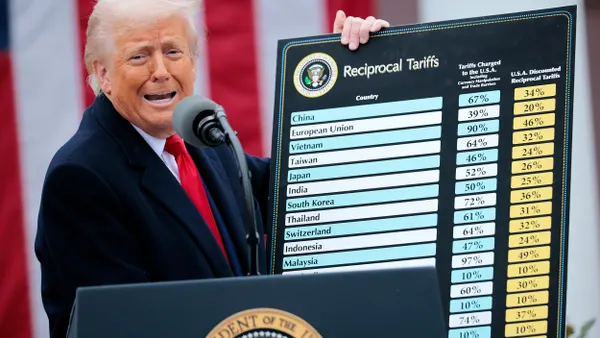Dive Brief:
- Sixty-five percent of surveyed marketers purchasing digital ads programmatically have either moved those functions in-house (18%) or have started to, with plans to continue internalizing functions (47%), according to new research by the Interactive Advertising Bureau (IAB) made available to Marketing Dive.
- The IAB based its report on a marketer survey and leadership insights, and outlined the top reasons that marketers are taking programmatic in-house, including improved ad performance and ROI; greater cost efficiency and transparency; better control and management of ads; better targeting, real-time optimization and accountability and a greater focus on brand goals.
- The research noted that transitions to in-house programmatic buying take at least a one-year commitment, complex coordination of partners, staff training and more. To meet those challenges, the IAB offered a checklist, which recommends conducting internal assessments, including a media evaluation performance and cost-benefit analysis; creating a "ramp-up" ahead of the change; practicing "data centricity" and integrating multiple data sources; establishing a tech stack and attracting and retaining talent.
Dive Insight:
Moving programmatic ad buying in-house is clearly an attractive solution for marketers that are demanding greater transparency from digital advertising, as well as increased cost savings and better measurement from digital channels. As the IAB cautions, however, it's not a move to be made lightly, and requires a long lead time and the built-in expertise to handle a programmatic technology stack and the complexity of data that come with it.
As marketing continues to become more data-centric, marketers are embracing the automation and efficiency that programmatic offers, but the space has its own issues as well, namely in the struggle to track where ads appear online and whether or not those placements are brand safe and can provide measurable business outcomes. Several high-profile controversies pertaining to programmatic advertising haven't slowed marketers' investments, however. By 2019, nearly two-thirds of all digital display ads are projected to be programmatic, reaching $84.9 billion in revenue, according to forecasts from Publicis Groupe Zenith.
The IAB's findings mirror other recent studies pointing to a trend toward making programmatic operations a largely internal function. More than one-third of ANA members are expanding in-house programmatic media buying and lessening the role of external agencies, with most citing brand safety as their top concern, according to research the trade group published late last year.











